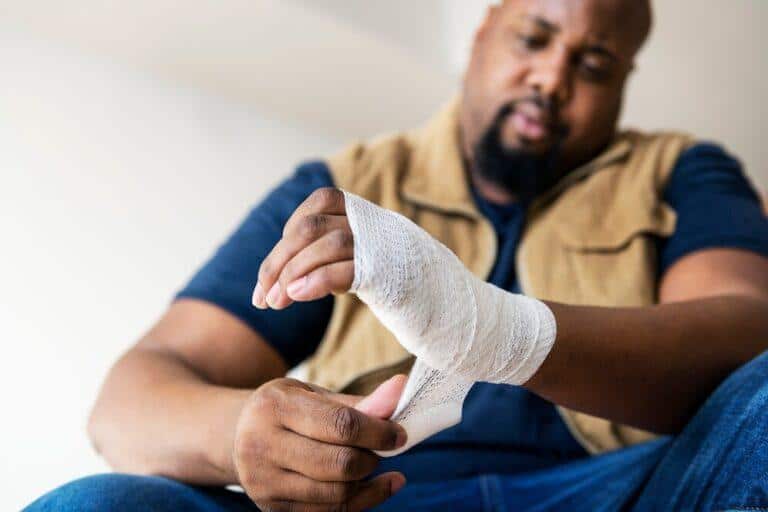Getting injured at work is not an exception; it’s the reality many workers face. Just in 2023, there were 2.6 million work-related injuries in the USA, 5,283 of which resulted in death, according to the Bureau of Labor Statistics. If you have been injured at work, or you are aware of this possibility, you’re probably wondering how personal injury or work injury claims work and, more importantly, how to avoid mistakes that could ruin them.

In this article, we’ll walk you through how workers’ compensation works in New York, what happens during a personal injury claim, the five biggest mistakes people make, how insurance adjusters scrutinize every detail, and when to get a lawyer for work injury claims or personal injury lawsuits. Understanding these pitfalls early can make a huge difference in getting the compensation you deserve.
What Is Workers’ Compensation?
Workers’ compensation is a mandatory insurance that most employers in New York and other states have to provide for their employees. Workers’ comp is a no‑fault system that gives injured employees medical benefits and partial wage replacement in case of a temporary or permanent disability, regardless of who was responsible for the accident. In New York, this system helps protect both workers and employers. Workers get immediate compensation without delays, while employers are protected from most lawsuits.
Injured workers can usually receive:
- Coverage for all their medical expenses.
- Lost wage compensation of up to 2/3ds of the injured worker’s previous salary if they can’t go back to work for more than seven days.
- Compensation for the surviving family of workers who died after a workplace accident.
In 2024, the New York State Workers’ Compensation Board approved 165,320 injury compensation claims. All 165,320 received medical attention covered by their insurance.
How Personal Injury Claims Work
Personal injury claims or lawsuits are different from a workers’ compensation insurance claim. While the workers’ comp claim does not need to go through the judicial system, a personal injury lawsuit is a civil lawsuit. Unlike workers’ comp, personal injury suits require proof of fault.
Workers’ comp insurance protects employers from most injured workers’ personal injury lawsuits. However, if employers willfully neglect NY safety codes or the Occupational Safety and Health Administration’s (OSHA) safety standards, workers can sue them after an accident.
Injured workers can also sue third parties responsible for the accident, such as building owners, contractors, or faulty product manufacturers.
In New York, for a personal injury claim, you can receive compensation for medical bills and expenses, lost wages, pain and suffering, loss of consortium, loss of enjoyment of life, and other non-measurable costs. Injured workers can usually receive more compensation when they file a personal injury lawsuit. However, the process is not automatic, and usually, companies will do everything in their power to pay as little as possible to the injured worker; that is why it’s always recommended to hire a personal injury lawyer or a workplace injury lawyer.
If you have suffered an injury after a workplace accident, and you don’t know if you can sue your employer or a third party, contact a trusted and successful work accident law firm to get a free consultation.
5 Mistakes That Kill Injury Claims
Workers’ compensation is a no-fault system; however, insurance companies often try to minimize their payments. Workers sometimes make mistakes that can either cost them the full benefits or at least part of them. Here are five mistakes injured workers often make when they file work-related injury claims:
- Failing to report the accident promptly: If you don’t report the incident to your employer right away, you risk losing all proof. Insurance companies may argue that your injury happened off the job. Always submit a written report immediately, even if you think your injury is minor.
- Skipping medical care or delaying treatment: Not seeking medical attention quickly, especially from approved providers, can lead insurers to claim your injury isn’t serious or that it happened elsewhere. Treatment delay is a major red flag.
- Not filing a workers’ compensation claim: In New York, injured workers must file Form C‑3 within 30 days of their injury to start receiving benefits.
- Over‑sharing with insurance adjusters: Insurance company agents might look for any detail they can twist against you, such as past injuries or hobbies. Avoid giving recorded or written statements without speaking to a workers’ compensation lawyer.
- Accepting a settlement without legal advice: Insurers might offer a quick payout once you reach “maximum medical improvement.” But that offer often undervalues future needs like long‑term care and costs. Always consult a successful and trustworthy workers’ comp lawyer before signing anything. Don’t let insurance companies minimize your payout.
Making any of these mistakes can seriously damage your claim, reduce your compensation, or even lead to outright denial.
How Insurance Adjusters Review Injury Claims Without Missing a Detail
Insurance adjusters are trained to find faults in your statements or claims. They:
- Examine who reported the incident and when.
- Review medical records, diagnoses, and treatment timelines.
- Analyze statements, especially looking for inconsistencies.
- Investigate prior injuries or health conditions.
- Calculate lost wage claims against your employment history.
When to get a lawyer for a work injury?
Injury claims can fail for simple mistakes. Discover the most common errors that ruin your personal or work injury compensation case. Successful work injury lawyers and firms do not charge for consultations, and if they decide to work with you, they will not charge you out of pocket. They will only receive a portion of the compensation they win for you. Call a workplace injury lawyer to receive a free consultation on your case and learn more about what to do and what not to do after a workplace accident.

